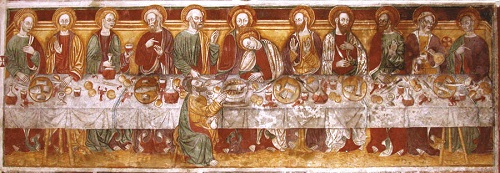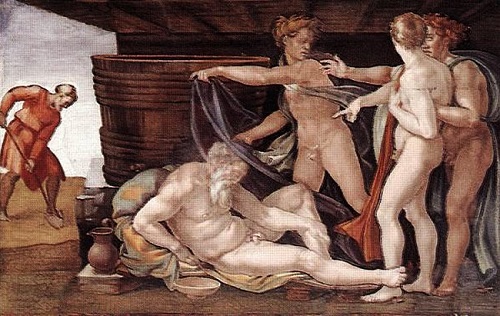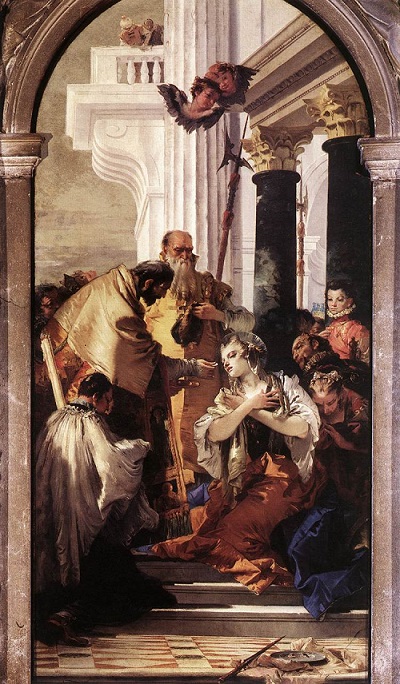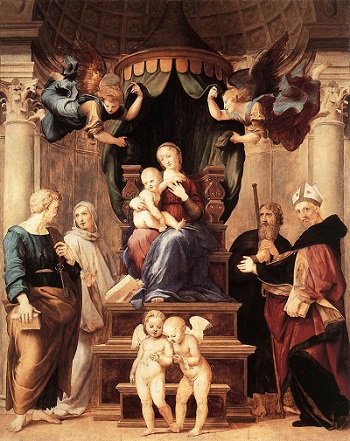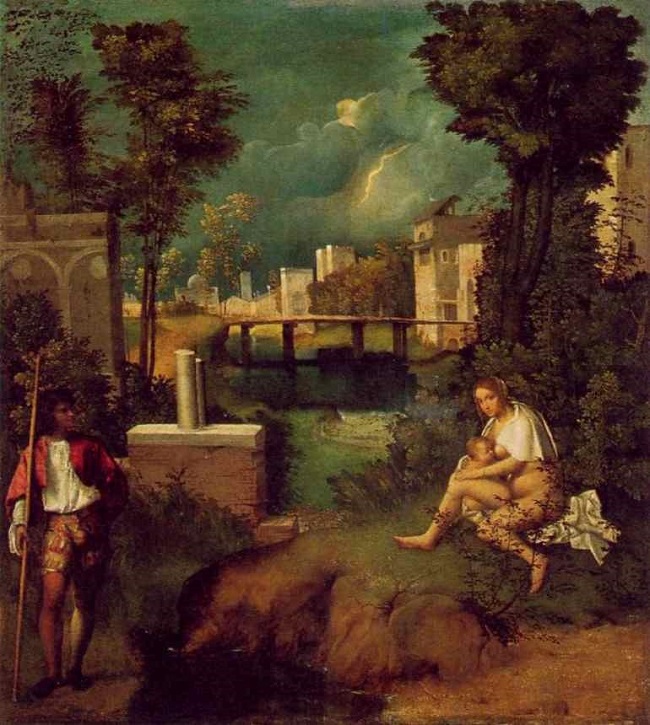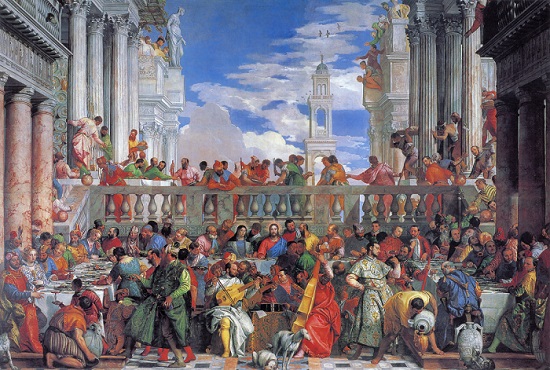
Sebastiano del Piombo (c.1485-1547) was a Venetian painter who completed his early artistic training in the company of his contemporaries. Titian and Jacopo Palma di Vecchio. A fortunate encounter with Agostino Chigi, resulted in a trip to Rome to assist him in the decoration of the Farnesina villa. Chigi had already enlisted his talented Sienese countryman Baldassare Peruzzi (1481-1536) and Il Sodoma (1477-1549), as well as Rome’s most successful painter, Raphael, to decorate the Farnesina country villa. After completing is contribution to this project, Sebastiano remained in Rome. apparently isolated from Raphael’s workshop because of his Venetian style, until he was adopted by Michelangelo, who promoted him as an alternative painted to Raphael.
Michelangelo hoped that his own figure drawings, combined with the Venetian’s warm glowing colours, would be sufficient to break Raphael’s monopoly on papal commissions and on young talents arriving in Rome. Michelangelo was well aware of the difficulties of marrying Florentine disegno with Venetian colore – antithetical approaches which were to polarise the world of late-sixteenth-century art theory – and so deliberately gave the studies he prepared for Sebastiano a more tonal surface. Ironically, the combined skills of the two artists were not enough to sway Chigi and it was Raphael who won the commission for the Farnesina’s two chapels in Rome – commissions Sebastiano could only wrestle back after Raphael’s death.
Although Michelangelo used Sebastiano to challenge Raphael’s dominance of religious commissions, the Venetian’s real forte was portrait painting, and by the 1520s he had established himself as Rome’s finest portrait painter. A series of striking images of Pope Clement VII won him great acclaim and the office of keeper of the (lead) papal seal – hence the name del Piombo.
The portrait (above) of English-born Cardinal Reginald Pole (1500-1558) is a wonderful example of Sebastiano’s power to capture a personality. His formula is loosely based on that of Raphael’s Julius II, which set the iconography for succeeding ecclesiastical portraits. Sebastiano’s cool greys. and the melancholic line hat calligraphically marks the borders of the Cardinal’s brittle robes, set off the tragic but proud face. This is an abstracted, almost Byzantine image, yet penetratingly human; even the gesture of the fingers seems to be drawing back, emphasizing the introspective almost uncomfortable nature of the portrait.
Cardinal Pole is described by one of his biographers as a thin man of average height, and of a complexion between white and red, of apparently ‘typically English’ colouring, His eyes, set in a large face, were recorded as being benign and light, but the biography notes that when he suffered from catarrh, his arm swelled and he had a red eye. The Cardinal also wore a beard, and the unruly whiskers in this portrait hade be ‘read’ either as a gesture of defiance or protest, or as a symptomatic of a disdain for appearance. A contemporary of the Cardinal once pointed out that such a beard could be kept in order for a few scudi a month, to which Pole promptly replied that this would mean that his beard was worth more than his head!
This painting has been dated towards the end of Sebastiano’s life (c.1545-46) because its stylization is in keeping with the qualities that were to characterize the following decades of Roman painting. This is, in many respects, a haunting and very personal portrait, and goes some way to imitate the style of his friend and supporter Michelangelo, which is very different to the more vibrant and evocative brushwork and colours of his Venetian heritage.
It is not known who was the commissioner of this portrait, but it has been noted that in 1546, the poet Vittoria Colonna was offering to obtain a portrait of Cole for Cardinal Cristoforo Madruzzo, but the reasoning behind this is again, not known.
Pole, a grand-nephew of Edward IV, became a refugee from Henry VIII’s England in 1532 on religious grounds. He travelled to Italy, where he became a Cardinal in 1536 under the Farnese pope, Paul III. Pole’s career was dominated by his hostility to the English Reformation – a which resulted in the persecution of his family, and the execution of this mother – and by his determination to reform the Roman Catholic Church. Only with the coronation of Mary I could be return to England in 1554, dying there in 1558, a day after her reign began.
This is an interesting and captivating portrait – stylised and somewhat rigid, almost marble-like – but there is sadness here in his eyes which is blended with almost a sense of some fear, which considering his background is understandable, as poignantly caught by Sebastiano. The rigidity of the hands show a tenseness in his personality, as if the portrait itself conveys the tension of his life.
There is however, a real power here, and you are drawn to want to understand who this man was, and if this is the measure of the success of a portrait, then Sebastiano has succeeded.

